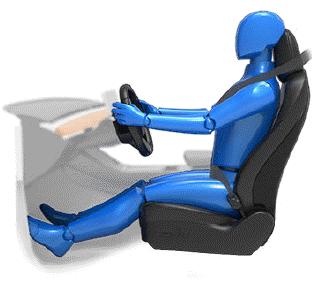Tesla Model Y: Correct Driving Position
The seat, head support, seat belt and airbags work
together to maximize your safety. Using these correctly
ensures greater protection.

Position the seat so you can wear the seat belt correctly,
while being as far away from the front airbag as
possible:
1. Sit upright with both feet on the floor and the seat
back reclined no more than 30 degrees.
2. Make sure you can easily reach the pedals and that
your arms are slightly bent when holding the steering
wheel. Your chest should be at least 10 inches (25 cm)
from the center of the airbag cover.
3. Place the shoulder section of the seat belt mid-way
between your neck and your shoulder. Fit the lap
section of the belt tightly across your hips, not across
your stomach.
Model Y seats include integrated head supports that
cannot be adjusted or removed.
READ NEXT:
Move seat forward/backward and adjust the seat's
height and tilt angle up/down.
Adjust backrest.
Adjust lumbar support.
WARNING: Before adjusting a front seat, check
that the area around the
Model Y provides seating for up to three
passengers in the second row. The seat back is split 60/40 so adjusting the left
seat back moves the seat backs for both the left and center seating position
Lift the bar located beneath each outboard
seating position to unlock and move the second row seats forward or rearward.
The bench seats have a 60/40 split. Therefore, the bar on the left side moves
SEE MORE:
1. Locate the statement "The combined weight of
occupants and cargo should never exceed XXX lbs or
XXX kg" on the "Tire and Loading Information" label.
2. Determine the combined weight of all occupants that
will ride in the vehicle.
3. Subtract the combined weight of the occupants from
XXX lbs
The charge port is located on the left side of Model Y,
behind a door that is part of the rear tail light assembly.
Park Model Y to ensure that the charge cable easily
reaches the charge port.
With Model Y unlocked (or a recognized key is within
range) and in Park, press and release the button


